The New Gastronome
Plant Based Diet
To Save the World one Bite at a Time
by Bela Gil
by Bela Gil
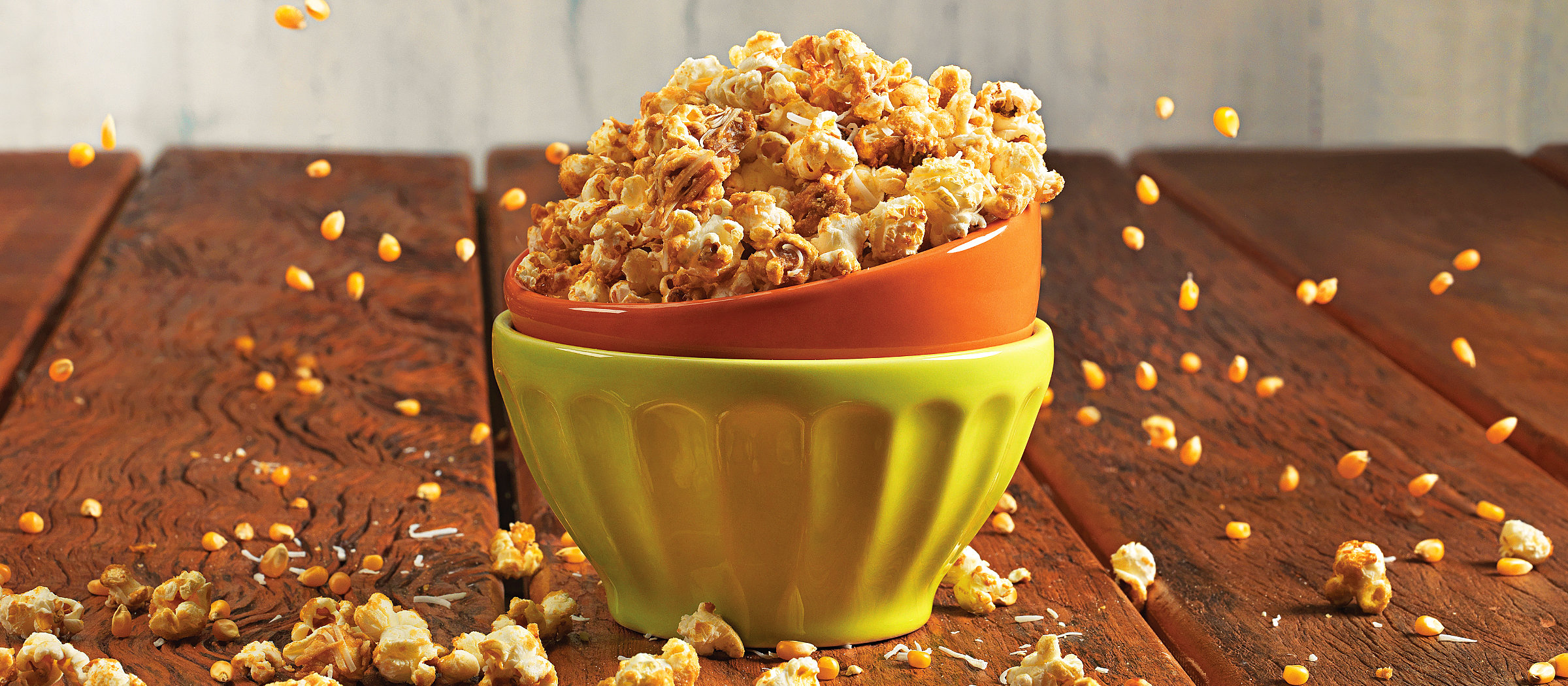
Eating is a necessary act to keep our bodies functioning well. However, depending on what, how much and when we eat, food can serve as medicine or poison, can bring joy or stress and even health or disease to human beings and the environment.
Today much is said and spread about healthy eating, however, it is important to understand that a healthy diet must benefit not only our health but also the soil and the health of those who bring food to our plates, the small farmers. The true holistic and healthy diet must contemplate how and by whom the food was produced, how good or bad the food is for one’s health, and the food’s impacts on the environment. Food is a crucial tool to change the world for the better and the change can start on our plates.
Avoiding meat and dairy products is the single biggest way to reduce our environmental impact on the planet, according to scientists. The study published in the journal Science in June 2018 shows that a plant-based diet could reduce the global farmland use by more than 75% – an area equivalent to the US, China, the European Union and Australia combined – and still feed the world. Meat and dairy are neither efficient nor sustainable sources of protein. They provide just 18% of calories and 37% of protein for humans; they use 83% of farmland and produce 60% of agriculture’s greenhouse gas emissions. The scientists also found that even the very lowest impact meat and dairy products still cause much more environmental harm than the least sustainable vegetable and cereal growing.
“A plant-based diet can save the world and it starts with you. What we choose to put on our plates today can define the future of humanity.“
Animal protein consumption not only harms the environment, but also human health. According to a recent study by the scientific journal The Lancet, consumption of red meat is associated with increased risk of coronary heart disease, type 2 Diabetes, strokes, and a shorter overall lifespan compared with consumption of nuts and beans.
Food systems have the potential to nurture human health and support environmental sustainability; however, they are currently threatening both. Diets inextricably link human health and environmental sustainability. A change in the way the world eats, especially in western countries needs to happen. However, this transformation will not be achieved without people changing how they view and engage with food systems. Globally, red meat and sugar consumption should be cut by half, while vegetables, fruits, pulses and nuts must double. North Americans alone need to eat 84% less red meat and Europeans 77%.
Recipes
A plant-based diet can save the world and it starts with you. What we choose to put on our plates today can define the future of humanity. So here are some recipes to help you save the world a bite at a time.
1. Crispy Cauliflower with Olive Cream
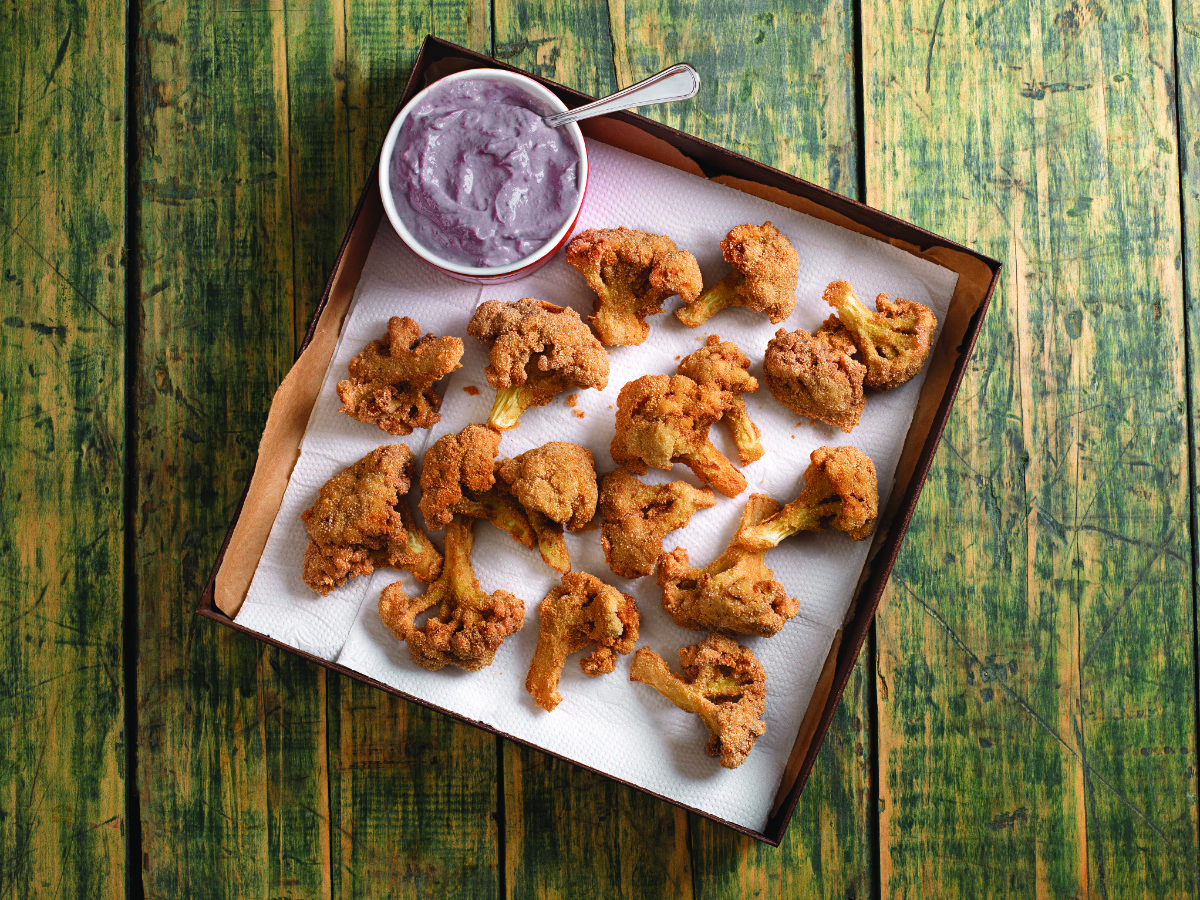
| Cauliflower: | |
| Cauliflower | 1 |
| Cassava Flour | 1 cup |
| Eggs | 2 |
| Sunflower Oil (for frying) | |
| Olive Sauce: | |
| Tofu | 250g |
| Green or Black Olives | 2 cups |
| Garlic Cloves | 1 |
| Olive Oil | 1 tbsp |
| Water (if necessary) | 250g |
For the Cauliflower, first, whisk the eggs with a pinch of salt. Make a breading station, dip the cauliflower in an egg wash, then coat the cauliflower in cassava flour. Deep fry the cauliflower in hot oil, remove it and dry the excess oil over a paper towel. Serve with the olive sauce.
For Olive sauce, place all sauce ingredients in a food processor and mix well.
A. D. V. E. R. T. I. S. I. N. G.

2. Pineapple Banana Cake
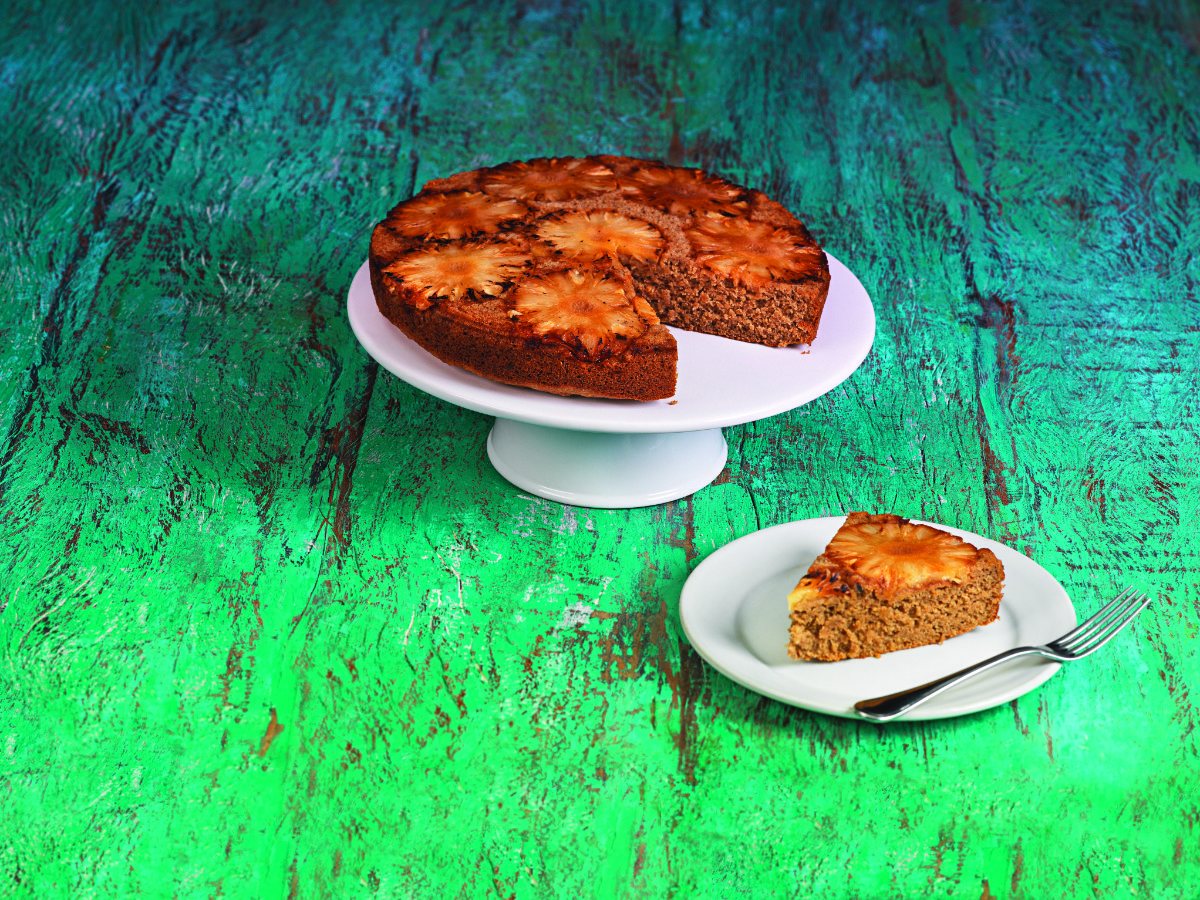
| Bananas with Peel | 3 |
| Fresh Pineapple, peeled and sliced | 1/2 |
| Oatmeal Flour | 1 cup |
| Rice Flour | 1 cup |
| Brown Sugar | 1 cup |
| Coconut Oil | 3/4 cup |
| Flaxseed* | 6 tsp |
| Ground Cinnamon | 1 tsp |
| Baking Powder | 1 tsp |
| pinch of salt |
* hydrated for 10 minutes in 1/4 cup of water, until it turns into a gel
First, preheat the oven to 180C. In a blender, blend brown sugar, hydrated flaxseed, salt, bananas with peel, cinnamon and coconut oil. In a large bowl mix the banana mixture with the dry ingredients. Prepare a round baking dish with a layer of pineapple slices on the bottom and place the dough on top. Bake for 30 minutes.
3. Coconut Popcorn
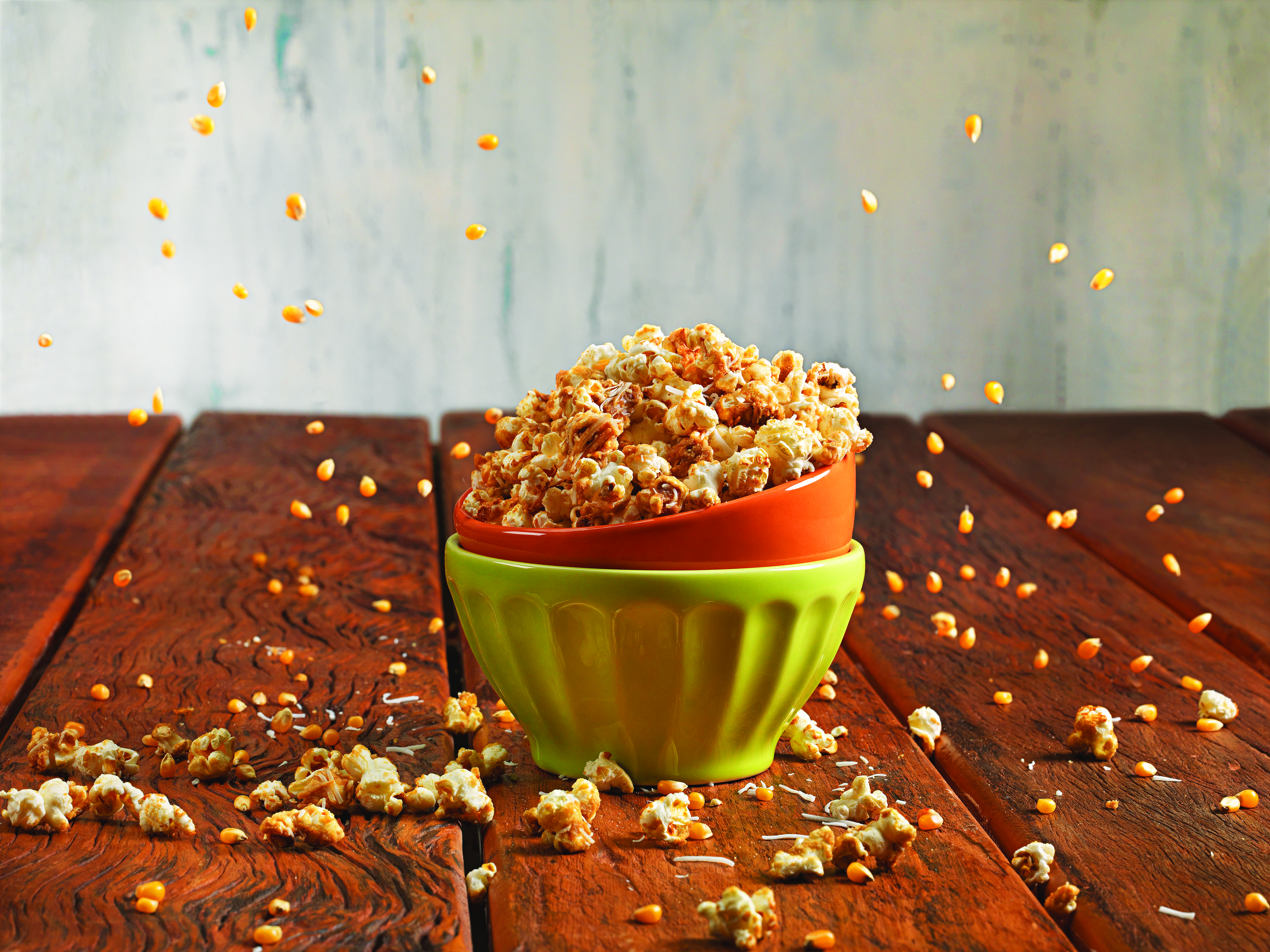
| Coconut Oil | 2 tbsp |
| Coconut Oil to melt the Maple Crystals | 1 tbsp |
| Popcorn Kernels | 1/2 cup |
| Maple Crystals | 4 tbsp |
| Grated Coconut | 4 tbsp |
Heat the coconut oil in a pan and add popcorn, cover the pan and leave over medium heat until it starts popping. When the kernels slow down popping, turn off the heat and let it sit for a few minutes before removing the popcorn from the pan. In a different pan, heat a tablespoon of coconut oil and add the maple crystals, let it melt. Add the grated coconut and let it brown. Drizzle over popcorn and mix.
4. Berry Tarte
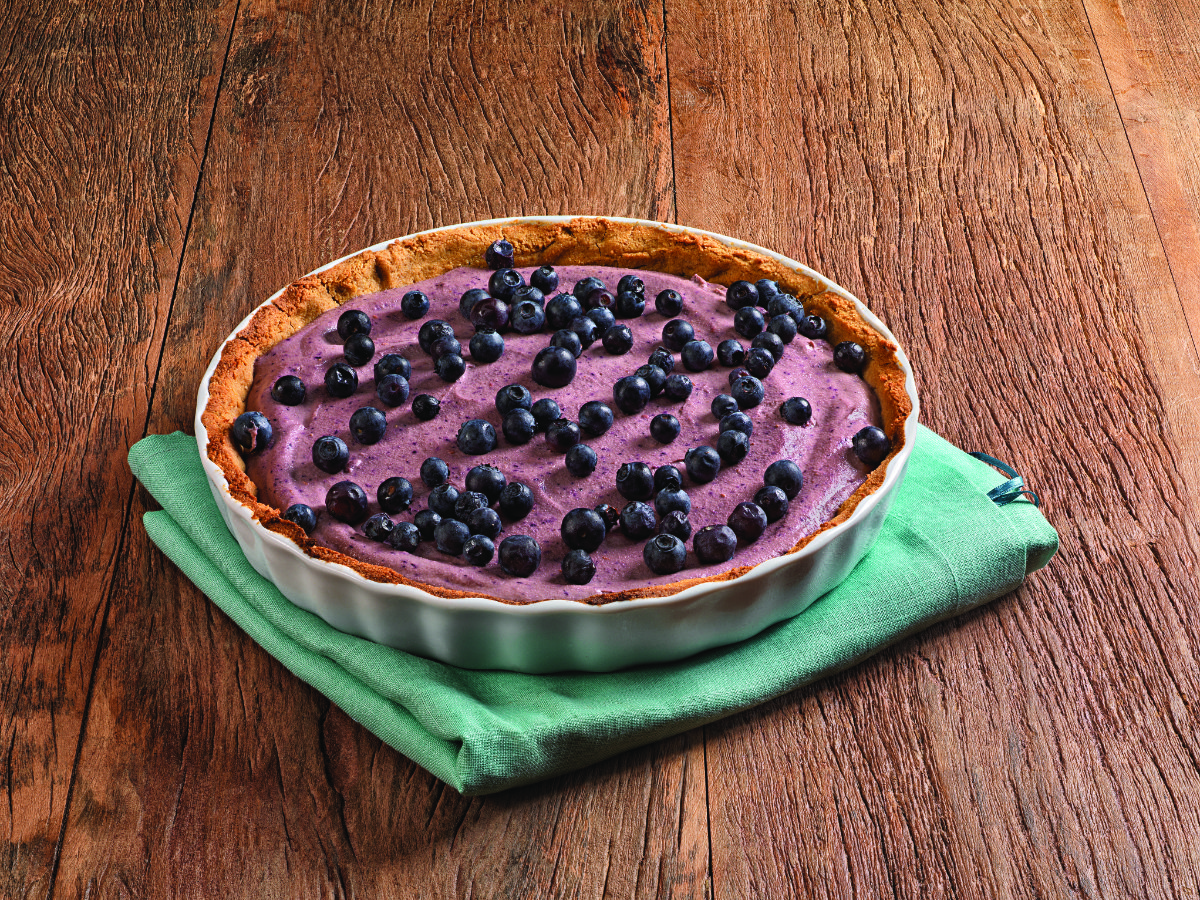
| Crust: | |
| Cornmeal | 1 cup |
| Oat Flakes or Oatmeal | 1 1/2 cup |
| Coconut Oil | 1/4 cup |
| Molasses | 1/4 cup |
| pinch of salt | |
| Filling: | |
| Soaked Cashew nuts* | 3/4 cup |
| Coconut Oil | 1/3 cup |
| Organic Honey or Molasses | 1/3 cup |
| Fresh Berries** | 1 cup |
| Juice of 2 Lemons |
* for 4-6 hours, or, alternatively, Green Banana Biomass
** Strawberries, Raspberries and Blackberries
For the Crust, preheat the oven at 180ºC. In a food processor add cornmeal, oats and salt mix until a fine flour is obtained. In a small bowl, combine the oil and the molasses and add it to the flour and mix well until forms a cookie dough consistency. Spread the dough in a pie pan of 23cm in diameter and bake for 15 minutes. Prepare the filling, while the dough cools down. Strain the nuts and bring all filling ingredients to a food processor. Beat until smooth.
Spread the filling over the already cool crust and refrigerate to harden. Decorate with blueberries on top and serve cold.
5. Kale Wrap with Beet Hummus
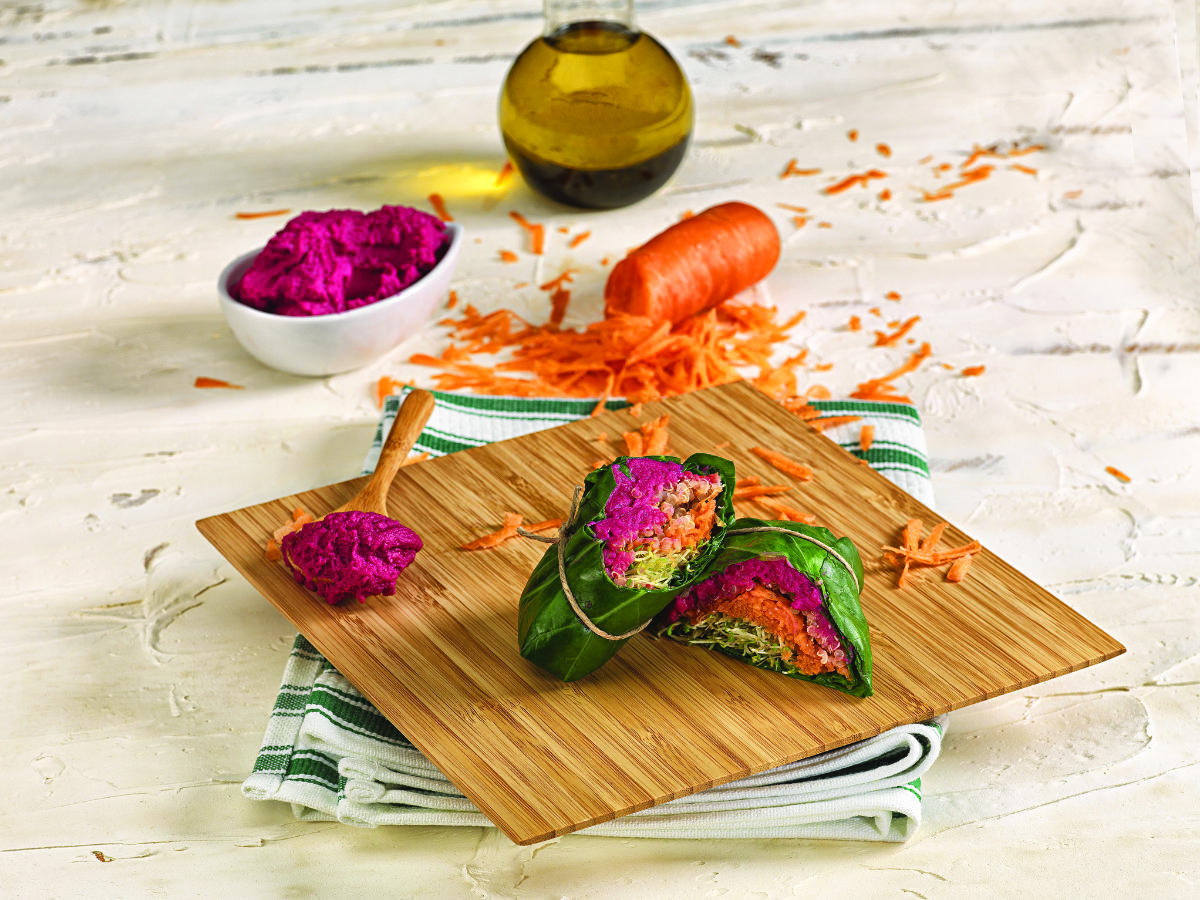
| Wrap: | |
| Kale Leaves | 10 |
| Hummus (see below) | 1 cup |
| Quinoa | 1 cup |
| Carrot* | 1 |
| Extra Virgin Olive Oil | 2 tbsp |
| Lemon | 1 |
| Microgreen and Sprouts | 1 cup |
| Hummus: | |
| Beets, cooked | 2 |
| Chickpeas, soaked for 8 hours | 1 cup |
| Tahini | 1/3 cup |
| Garlic Clove | 1 |
| Juice of one Lemon | |
| Sea Salt and Extra Virgin Olive Oil to taste |
*finely grated & seasoned with Extra Virgin Olive Oil and lemon
For the Hummus, cut the beets into medium pieces, cook in the water for 10 minutes. In the pressure cooker, cook chickpeas for 40 minutes. Cook the quinoa for 10 minutes. Place all ingredients in a food processor or blender and mix until thick homogeneous paste forms, adding olive oil as needed.
To assemble the wrap, first, blanch the kale leaves until they become shiny and remove the stalk. On a cutting board, place two kale leaves upright, one facing you and the other facing away from you, spread 1 spoon full of hummus on the kale leave. Layer quinoa, grated carrots and microgreens on top of the hummus. Wrap the kale by first closing the sides, then wrap it from the tip closer to you. Cut in half, diagonally and serve hot or cold.
References:
Photos ©Sergio Coimbra
